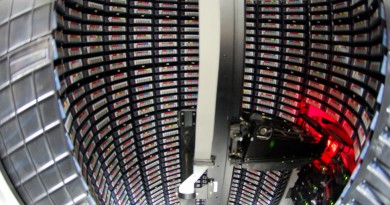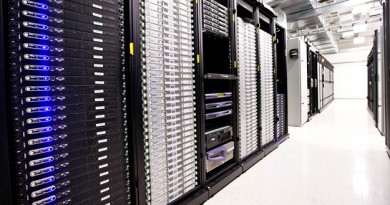Understanding the Role of Flash Storage in Enterprise IT
More organizations across a number of industries are looking at different ways to control storage and their data. Traditional storage solutions still have their place, but new methods are allowing IT shops a lot more flexibility in how they design their storage solutions, and flash is one of the most popular options. So is it really catching on? Is the world really going to solid-state?
Let’s examine one use case that’s been seeing a resurgence in the modern enterprise: VDI.
In the past, technologies like VDI were seen as heavy fork-lift projects which required time, resources, dedicated infrastructure, and big budgets. That has all changed with advancements within network, compute, and storage. Today, strong VDI offerings provide five-nines availability and greater scalability, as well as non-disruptive operations. With this in mind, it’s important to note that for a truly successful VDI deployment, all-flash storage should be part of the change in the VDI ecosystem. Ultimately, this will enable much higher performance for end users.
Often times, with sub-millisecond performance user experience with all-flash storage in the background is even better than the performance they had with physical devices and definitely better than VDI with spinning disks or even hybrid storage solutions. This type of technology has become one of the big change factors which now enable successful VDI deployments.
Higher-performance flash does not necessarily mean higher cost, but we’ll talk about VDI economics in a bit. From an economics perspective, new types of all-flash systems actually provide some of the highest levels of data reduction. With greater than 10:1 data reduction capabilities, the cost of high-performance storage is much more reasonable than one might expect, especially when companies expect flash to be a premium storage offering with premium prices.
The reality is large data reduction capabilities result in lower cost of storage, greater data center real estate savings, and savings in power and cooling. All of this results in a lower total cost of ownership as well as lower cost per desktop.
All-flash and solid-state solutions are revolutionizing resource utilization and reshaping the economics of the data center. Many of the older premonitions we had around all-flash are quickly going away as more organizations adopt flash for its many benefits.
To really understand this evolution in storage, we need to look at the good parts around flash technologies, the challenges, and what the future will hold.
The Good
Let’s start with cost. You’d think that all-flash comes at a premium, but you should definitely crunch the numbers again as they relate to your business. You can save a lot of money by nixing out a massive storage controller and opting for a complementary all-flash array. That sounds great, but what about management? Well, here’s where we usually talk about software-defined storage. However, modern storage management goes beyond SDS and into actually controlling enterprise functionality from the logical layer. The next generation of data abstraction won’t care about your hypervisor, your underlying hardware platform, or even which data center you’re using. New types of all-flash and storage systems create greater levels of data control and management. Furthermore, these data abstraction layers offer deduplication, data encryption, acceleration, and more. New flash controllers are smaller, smarter, faster, and less expensive. Plus, they’re fitting into more use cases for your business, and they’re integrating into cloud and virtualization layers much more seamlessly.
The Bad
It’s not all sunshine when it comes to controlling cloud and data storage. It’s certainly exciting to have so many more conversations around next-generation storage solutions, but we also have to be realistic. We’re seeing adoption happen already, but it’s more use-case-specific rather than across the enterprise. Creating an enterprise flash solution takes away from a tried and true method of data control. What if your data simply needs that underlying controller resource? What if you need some kind of proprietary replication method that only a traditional enterprise controller currently has? What if your apps require a validated design for support? These are all legitimate challenges to deploying an all-out solid-state solution.
Finally, although cost is becoming less of an issue, it’s still a big consideration. Certain data types simply do not need to live on an all-flash array. Information which needs to be archived or just doesn’t require much performance is better suited for traditional disk environments. And so, the role of all-flash within the enterprise will have to remain use-case-specific. It’s not entirely feasible to have an enterprise organization rip out its entire storage ecosystem to replace it with all-flash. Right now, that’s just not economical. However, as cloud systems evolve and offsite storage/archival become easier to integrate with, we’ll see higher percentages of all-flash controlling more of the enterprise ecosystem.
The Future
A big concern around all-flash arrays revolves around reliability, management, and resiliency. The good news is that now you can incorporate your uptime requirements around solid-state technologies while abstracting powerful controls into the logical layer. The power of virtualization and next-gen data movement allow you to create intelligently replicated and resilient storage platforms.
Now, let’s talk about the future a bit. Commodity systems are going to make an impact. Already storage administrators will actively look at options outside of traditional storage. Just look at how well new technologies like Nimble and Pure are doing. With that in mind, the data control layer will only continue to evolve. The future of data abstraction will revolve around the capability to manage heterogeneous environments without complexity. An organization will be able to acquire a new branch or division without having to rip out their existing infrastructure. They simply need to import a VM, point storage repositories and data points to that VM, and allow it to do the rest. Powerful REST APIs are impacting how we integrate with cloud automation and management solutions like OpenStack, CloudStack, and others.
New types of applications and use cases are demanding more resources and better delivery methodologies. Commodity platforms, virtualization, and the proliferation of all-flash technology will profoundly impact the storage market moving forward. And, as much as it’s all changing, it will be up to the enterprise to understand their own evolving use-cases and see where new types of solid-state technologies have a direct fit.
Admins can now pick and choose their storage platform. Applications, data sets, and users are all influencing how we create data and support our organizations. Commodity systems and converged platforms are all playing their part in shaking up the storage industry. The bottom line is there are new options out there. And, in a growing number of use cases, all-flash systems make a lot of sense.




